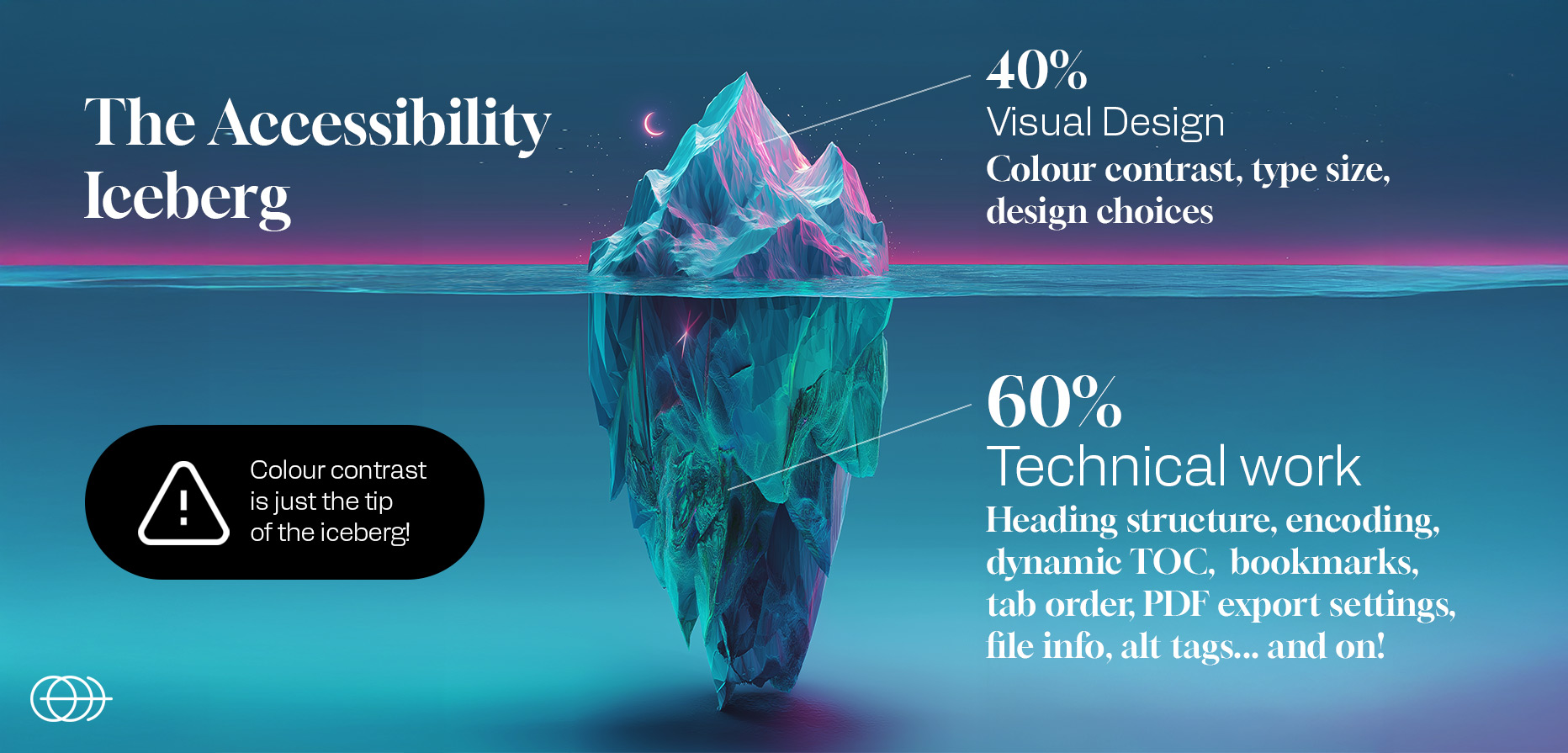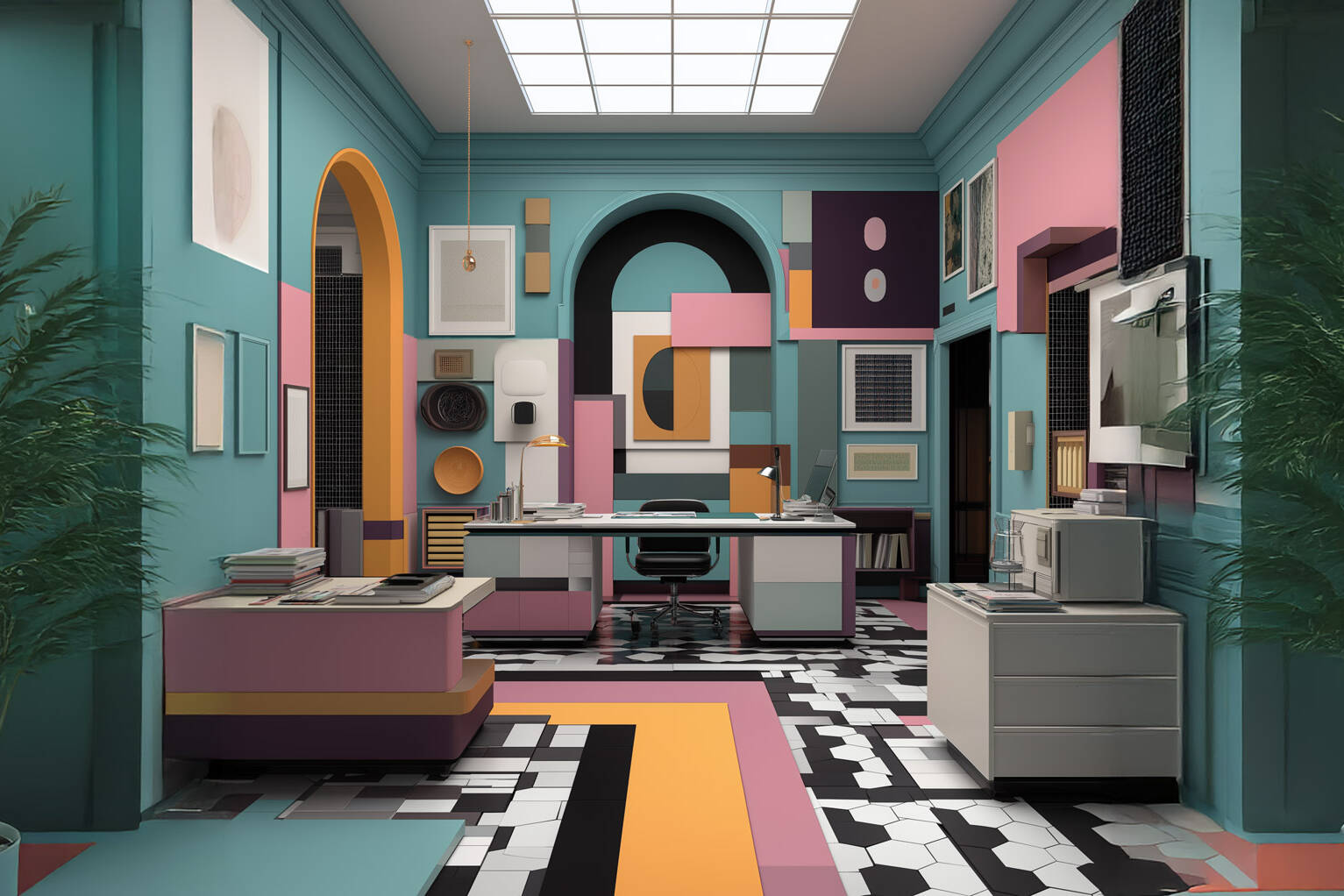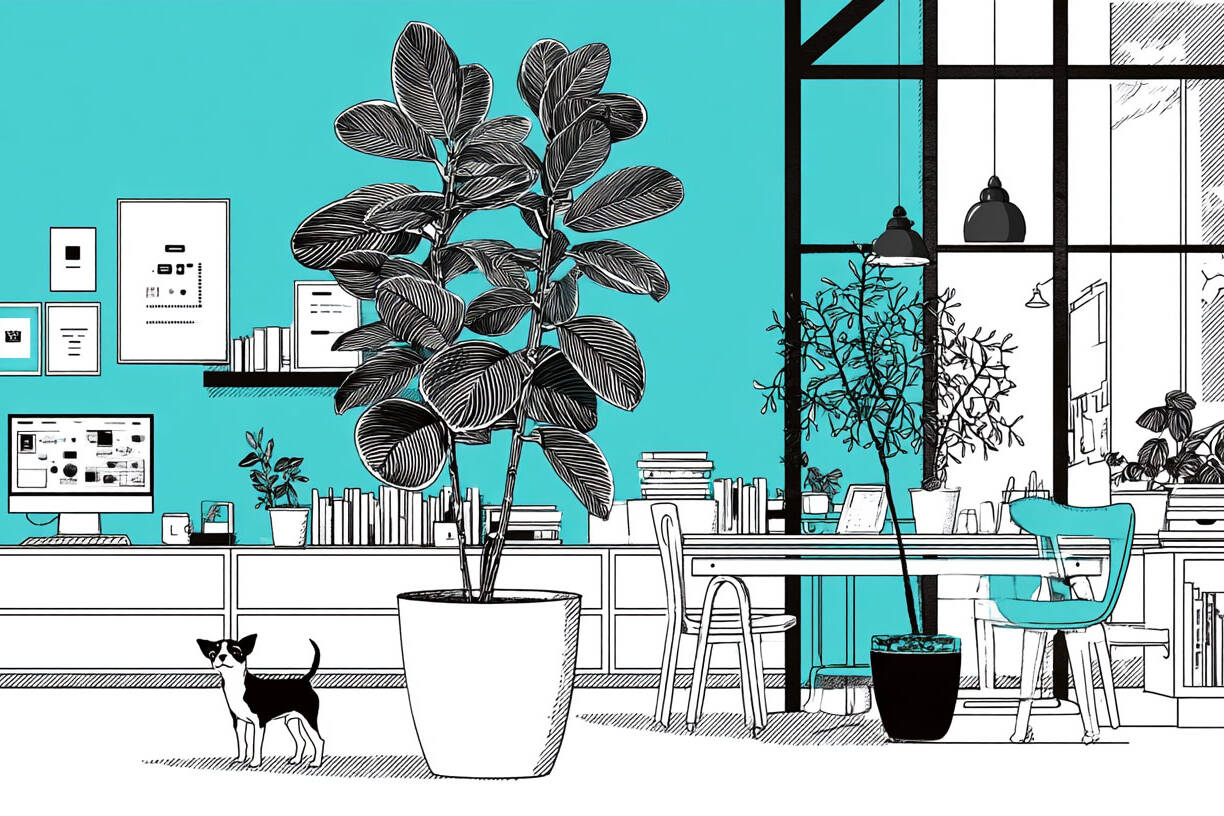When you hire a graphic designer, you’re expecting beautifully designed materials that communicate your message clearly. But for many organizations—especially those in education, government, nonprofits, and public services—good design isn’t just about looks. It’s about ensuring your content is accessible to everyone, including people with disabilities. That’s where accessible design comes in.
If your materials need to meet WCAG 2.1 Level AA standards, there’s a big difference between working with a generalist designer and one trained in accessibility. Below, we break down the key distinctions—and why it matters.

Understanding of Accessibility Standards
Regular Graphic Designer:
Not familiar with the Web Content Accessibility Guidelines (WCAG) or the AODA, and likely hasn’t studied or had formal training in accessible visual communication–it’s extensive! Unless your designer is constantly reading about current best practices, it’s likely they are unaware of the complexities of accessibility designing.
Accessible Designer:
Understands and applies WCAG 2.1 Level AA requirements from the ground up. This includes not just checking contrast ratios and font legibility, but also understanding how layout, hierarchy, encoding, and file structure affect usability for assistive technologies.
Accessible designers know that accessibility is not a final check—it’s a framework that shapes the entire design process.
Colour Contrast and Readability
Regular Graphic Designer:
Not familiar with the Web Content Accessibility Guidelines (WCAG) or the AODA, and likely hasn’t studied or had formal training in accessible visual communication–it’s extensive! Unless your designer is constantly reading about current best practices, it’s likely they are unaware of the complexities of accessibility designing.
Accessible Designer:
Understands and applies WCAG 2.1 Level AA requirements from the ground up. This includes not just checking contrast ratios and font legibility, but also understanding how layout, hierarchy, encoding, and file structure affect usability for assistive technologies.
Accessible designers know that accessibility is not a final check—it’s a framework that shapes the entire design process.
Understanding of Accessibility Standards
Regular Graphic Designer:
May focus on aesthetics first, relying on brand colours, trendy palettes, or subtle visual treatments that could reduce legibility (e.g., light grey text on a white background).
Accessible Designer:
Checks every combination of text and background in the design to test for minimum contrast ratios (4.5:1 for normal text, 3:1 for large text). They know how to work within brand palettes while still meeting these standards—and when to advocate for contrast-safe adjustments.
Use of Typography
Regular Graphic Designer:
May choose typefaces purely for visual appeal or brand alignment—often favouring light weights, small scaling, condensed styles, or decorative fonts.
Accessible Designer:
Selects fonts with accessibility in mind: open shapes, clear letterforms, generous spacing, and predictable scaling. They also consider line length, line height, and font size to improve readability for users with cognitive or visual impairments.
Document Structure and Export Standards
Regular Graphic Designer:
Not aware of the importance of semantic structure in exported PDFs or digital documents. As a result, their files may look fine visually but be completely unusable for screen readers.
Accessible Designer:
Builds documents with structure in mind—ensuring that file name, table of contents, bookmarks, headings, paragraph style encoding, alt text, reading order, tables, and tags (and more!) are all properly implemented. They use Adobe InDesign, Acrobat Pro, and accessibility checkers to confirm the document passes accessibility audits (including the Acrobat Accessibility Checker or PAC3/4).
This work is especially crucial for materials like:
- Annual reports
- Academic documents
- Government publications
- Public-facing forms and guides
Testing and Remediation Skills
Regular Graphic Designer:
May view accessibility as a constraint or an afterthought.
Accessible Designer:
Knows how to run tests using:
- Acrobat’s Accessibility Checker
- NVDA or VoiceOver screen readers
- Colour contrast analysers
- PDF/UA standards tools
They also know how to remediate files to correct accessibility issues in exported formats, which often involves complex tagging or reordering content that isn’t visible to sighted users but critical to others.
Inclusive Mindset
Regular Graphic Designer:
Unlikely to perform accessibility testing—or even be aware of what tools are needed to do so.
Sees accessibility as an essential part of design—one that fosters inclusion, equity, and clarity for everyone. They’re attuned to the diverse ways people experience content, and they strive to remove as many barriers as possible from the start.
Not sure if your report is accessible? Here’s a test you can try
Are your table of contents entries underlined? Try to click on a table of contents entry and see if it jumps you to the relevant section. A dynamic (linked + bookmarked in Indesign) table of contents is a required function for an accessible designed PDF and without it you can be sure your designer is unaware of a basic core requirement.
Or you can use Acrobat’s Accessibility Tester to really dig in!
On this subject
Designing Clarity for Canadian Research Departments & Think Tanks
When research meets design, ideas reach farther. See how Universe Design Studio supports Canada’s think tanks and research organizations.
Website DesignReport DesignGraphic DesignAccessibilityStrategy
Why SEO Still Matters in 2025—Even in the Age of AI Search
Strong SEO still drives real traffic—especially now with AI in search results. Here’s why it matters in 2025, and how we help our clients get to the top.
Why It Makes Sense to Hire a Sector-Specialized Graphic Designer
Hiring a sector-specialized graphic designer ensures accessible, inclusive, and on-brand communications tailored to public, nonprofit, and academic audiences.
Let’s design something great together.
If our work resonates with you, we’d love to chat about your next project.


